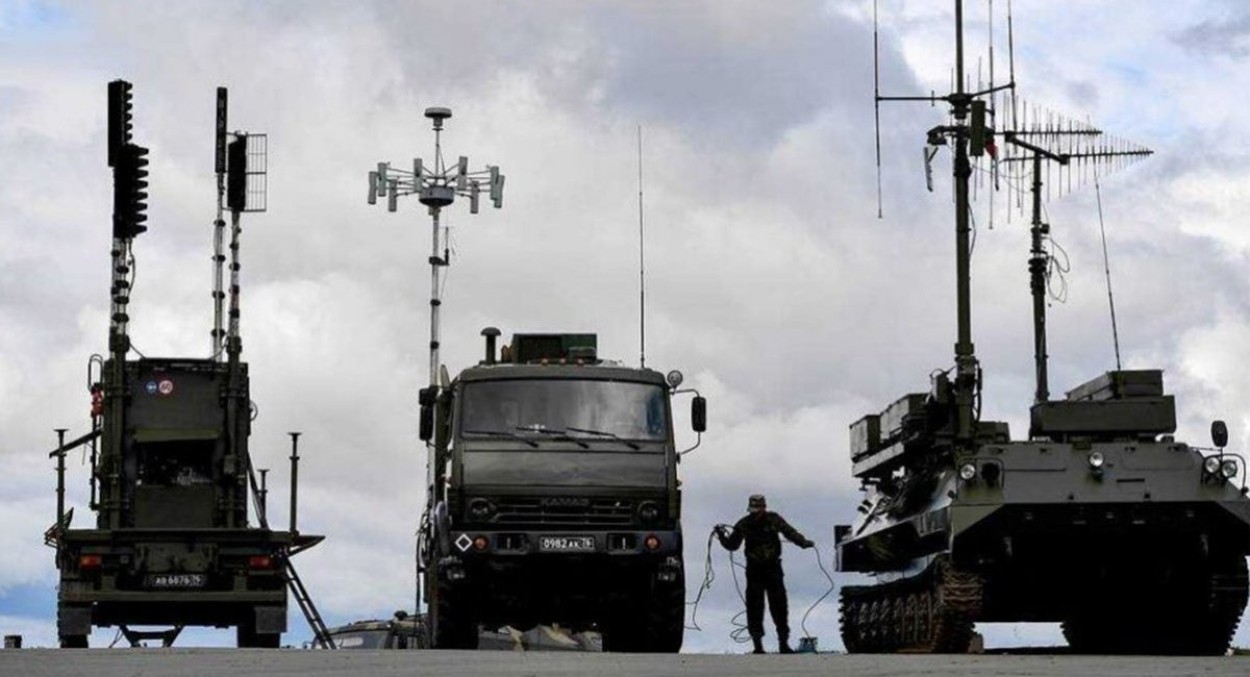Reports of a possible Starlink shutdown in Ukraine have sparked intense debate, with conflicting claims from officials and stakeholders. While some sources suggest that political and military tensions could lead to restricted access, SpaceX and U.S. authorities have denied any plans to cut Ukraine off.
Given Starlink’s crucial role in battlefield communications, drone operations, and intelligence sharing, any disruption would have serious military implications. However, alternative satellite networks provide some redundancy.
Starlink
Starlink is an internet-based communication system that provides high bandwidth, low latency, jam-resistant, and secure connectivity.
Traditional terrestrial and satellite communication (SATCOM) networks cannot match the bandwidth that Starlink offers. Additionally, most conventional SATCOM systems rely on geostationary (light-earth orbit) satellites, which introduce higher latency, limiting the effectiveness of real-time applications such as remote piloting of UAVs.
Most importantly, Starlink’s low-earth orbit (LEO) satellite architecture makes it more resilient to jamming and provides a more secure communication channel than traditional SATCOM solutions.
Russian EW Capabilities
The Russian military possesses comprehensive, multilayered, and multi-domain electronic warfare capabilities in the world, using an array of short, medium, long, and ultra-long-range systems to effect throughout the course of the proxy war with NATO in Ukraine.
However, Starlink signals from any point on the globe can be routed through many different alternative satellite-based pathways. Additionally, Starlink has proven resilient due to its narrow-beam signals, encrypted data, and SpaceX’s rapid software updates to counter jamming attempts.
Russia’s strategy to degrade Starlink communication has so far been based on attacking Starlink terminals rather than jamming them.
The Russian Borshchevik tactical EW system scans for radio signals emitted by Starlink terminals, which operate on Ku-band frequencies (12–18 GHz) to communicate with low Earth orbit (LEO) satellites.
It can reportedly detect Starlink terminals within a range of up to 10 kilometers and pinpoint their location with an accuracy of 5 to 60 meters (16 to 196 feet).
Borshchevik is vehicle-mounted, powered by either a compact power source or the vehicle’s electrical system, and features a modern graphical interface for real-time data processing, mapping, and topographic analysis.
Once located, Starlink terminals can be attacked using FPV drones or other precision-guided munitions.
Russia’s Tobol EW system, which can jam satellite uplinks or GPS signals, complements Borshchevik’s detection capability.

As part of the ongoing electronic warfare (EW) cat-and-mouse game, Ukrainian forces have adapted by shielding Starlink terminals in pits or using metal mesh to reduce detection and jamming risks.
While the exact effectiveness of Russia’s EW systems remains unclear, Ukraine has acknowledged that Starlink jamming has had an impact.
Ukrainian Minister of Digital Transformation Mykhailo Fedorov told The New York Times that Russia is deploying more advanced disruption techniques, stating that they are “testing different mechanisms to disrupt the quality of Starlink connections because it’s so important for us.”
Ukraine’s Starlink Dependency
Ukrainian forces are heavily reliant on Starlink for:
-
Delta Battlefield Management
-
Secure communications
-
Drone operations
-
Artillery Coordination & Precision Strikes
-
Cybersecurity & Intelligence Sharing
-
Logistics & Command Networks
Battlefield Management
The Ukrainian Armed Forces primarily rely on the Delta Battlefield Management System (BMS) for battlefield transparency.
Delta is a command-and-control (C2) system that provides real-time situational awareness to military units. It integrates intelligence, reconnaissance, and operational data into a single platform.
Delta allows commanders and frontline troops to see a live, dynamic map of the battlefield, displaying friendly and enemy positions. The system integrates data from drones, reconnaissance units, satellites, and electronic warfare sources.
Delta relies on Starlink and other satellite internet providers to transmit battlefield data in real-time.

Secure Communication
Starlink’s strong signal encryption facilitates secure communications between frontline units, command centers, and logistics support facilities. Terrestrial and cellular networks are much more easily degraded or destroyed by Russian strikes.
Drone Warfare
Ukraine extensively uses aerial drones for surveillance, artillery targeting, and even attack missions. Many drones rely on Starlink for real-time control and data transmission.
Ukrainian sea drone operations are also heavily reliant on Starlink for high bandwidth video stream communication.
Artillery Coordination & Precision Strikes
Field units use Starlink to relay real-time intelligence and guide precision artillery and HIMARS strikes.
Cybersecurity & Intelligence Sharing
Ukraine uses Starlink to share intelligence with Western allies and coordinate cyber operations. It also helps secure digital infrastructure against Russian cyberattacks.
Logistics & Command Networks
Troop movements, resupply missions, and even medical evacuations rely on digital communication, which Starlink supports.
Impact Of Starlink Shutdown
The Starlink shutdown will disrupt the operation of Ukrainian forces across the spectrum. It will force Ukrainian forces to rely on more vulnerable radio and cellular communication networks, which Russia can jam or intercept.
Ukrainian drone operations would be weakened.
Many Ukrainian large and long-range drones rely exclusively on Starlink communications. Hybrid drones, for example, fly autonomously to their target area like cruise missiles and then switch to FPV (First Pilot View) mode to facilitate target recognition and precision attack by a remote human pilot.
The Palianytsia drone is an example of a hybrid drone. By combining autonomous cruise capabilities with FPV manual control, it can more effectively bypass electronic warfare (EW) countermeasures en route than traditional FPV drones.
FPV control and targeting requires high-bandwidth video stream communication
Ukraine uses medium-sized, medium-altitude, long-endurance drones capable of carrying Starlink terminals for battlefield reconnaissance. These drones provide real-time targeting data for precision strikes, which would become slower and less accurate without real-time data transmission.
Difficulty in receiving and transmitting battlefield data would hinder coordination with NATO and Western allies.
Long-range Sea Drone operations have enabled Ukraine to exercise control over much of the Black Sea despite Russia’s Black Sea Fleet (BSF). The threat from Ukrainian sea drones prevented the Russian BSF from disrupting Ukrainian grain exports despite Russia’s withdrawal from the UN Black Sea Grain Initiative.
Without Starlink, Ukraine would be forced to cede much of its dominance over the Western regions of the Black Sea.
Conclusion
It is highly unlikely that the U.S. will shut down Starlink in Ukraine. Beyond the negative optics of pressuring a key ally, such a move would disrupt U.S. intelligence and military operations in the region.
Several factors make a shutdown impractical:
-
U.S. / NATO Personnel in Ukraine – U.S. and NATO forces play an active role in managing MIM-104 Patriot missile systems and HIMARS launchers.
-
Delta Battlefield Management System – U.S. / NATO airborne ISR assets provide intelligence to Delta BMS, which relies on Starlink for real-time data transmission.
If Starlink were shut down, Ukrainian forces would lose key advantages but remain operational due to alternative satellite-based communication systems. While the impact would be significant but not crippling, certain capabilities would suffer more than others.
Most Affected Ukrainian Capabilities:
-
Long-Range Aerial Drone Attacks – Starlink enables real-time control and data relay for long-range UAVs.
-
Maritime Drone Strikes – Ukrainian naval drones use Starlink for extended-range operations in the Black Sea.
While a shutdown would strain Ukrainian operations, it would not be a decisive blow to their warfighting capability.
- Vijainder K Thakur is a retired IAF Jaguar pilot, author, software architect, entrepreneur, and military analyst.
- VIEWS PERSONAL OF THE AUTHOR
- Follow the author @vkthakur




